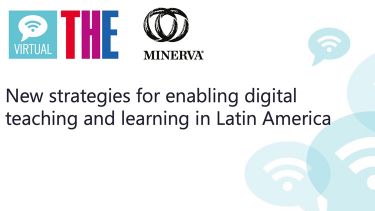
New technologies and government initiatives are driving innovation in India’s higher education sector
How universities manage their digital transformation will shape higher education for decades. If the Covid-19 pandemic has offered a crash test of higher education’s digital capacity, we now, a year into the crisis, have a better idea about the challenges of digital transformation and what can be done to overcome them.
India makes for a fascinating case study. The size of the country and its large rural population put particular pressure on its digital infrastructure. But as a world leader in IT-related services, India is well placed to offer its institutions the technological support they need. Dr Sandeep Sancheti, former vice-chancellor of SRM Institute of Science and Technology, acknowledges that India’s higher education system faces pressure to address digital inequality and ensure students can access digital learning, but he also believes the biggest hurdle has hitherto been the mindset of students, faculty and parents. Covid-19 has changed all that. “There is not a choice any more,” he says. “Either you decide to lose your year and come back when normalcy returns, otherwise, take the risk of going online.”
India’s shift to digital teaching in the past 10 months has been rapid. The Indian government has been proactive in addressing geographic digital inequality, while Dr Sancheti believes that technology itself is the great leveller. “Once technology creeps into our life, it becomes an irrevocable process,” says Dr Sancheti. “It expands its pace pretty fast. It makes things very cheap.”
Establishing best practice amid a fast-evolving technological environment is the next step. Dr Sancheti says universities are contending with a vast array of novel tech solutions. “These technologies have potential,” says Dr Sancheti. “For example, examinations through AI-based systems, [but] there were lots of false alarms. The systems are not so well trained right now.”
Dr Sancheti is a member of the University Grants Commission (UGC), which works with the Indian government in developing models for higher education’s technical requirements. New modes of learning require new resources on campus, and much of the work of the UGC is trialling IT-based solutions. The government has created the National Educational Technology Forum to provide direction, support, investment and advice to institutions whose technological capacity is crucial to the success of the Academic Bank of Credit scheme, which seeks to liberalise higher education by offering flexible credits-based degrees.
Kenn Ross, managing director of strategic partnerships and Asia at Minerva Project, believes this climate of innovation offers opportunities to modernise curricula, and he advocates wholesale reform towards an active mode of teaching and learning. “We think that this is the holy grail of education,” he says. “Regardless of what you are studying, active is so much more effective than passive. Active Socratic debate is so much more effective than lectures. When it comes to assessment, that formative assessment, aimed towards mastering concepts over time, is much more effective than summative, traditional, exam-based assessments.”
The science, says Mr Ross, is clear. Now is the time for new pedagogies; digital transformation will be crucial in delivering them.
Find out more about Minerva Project.



